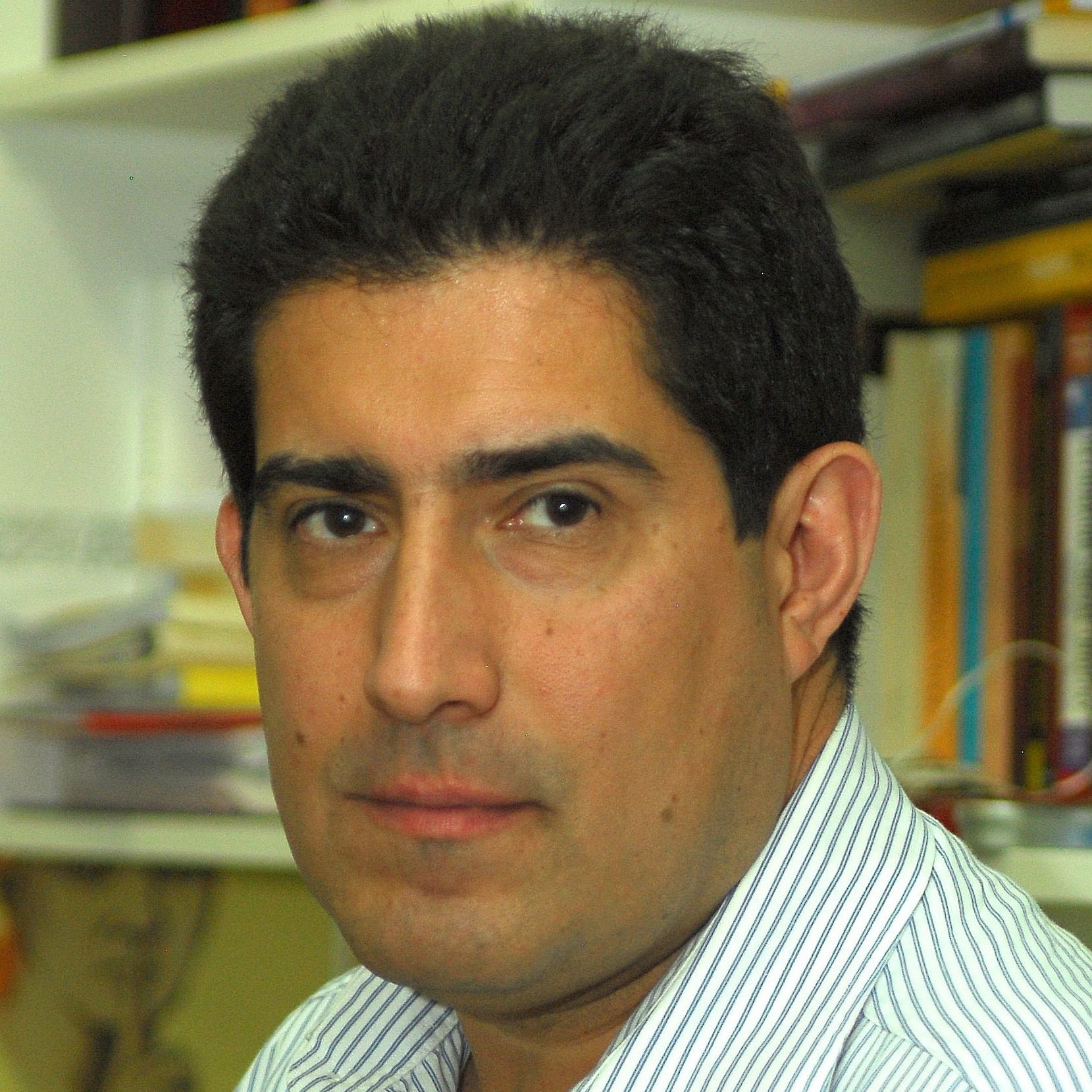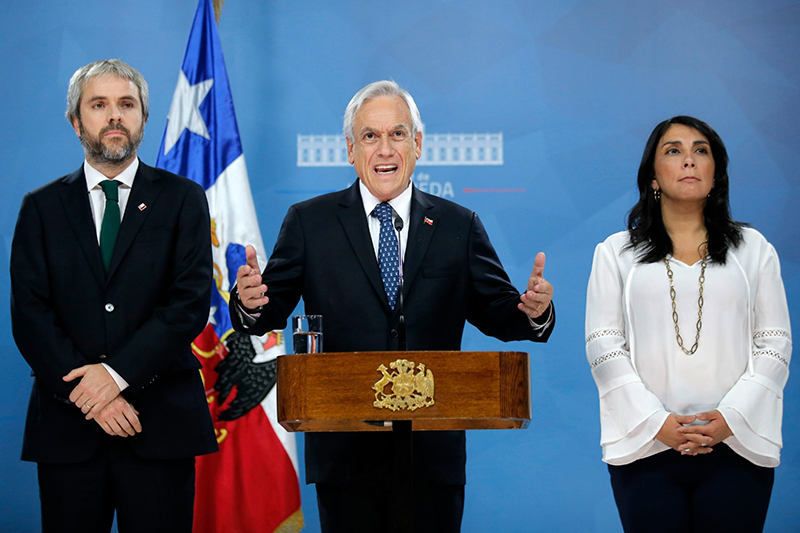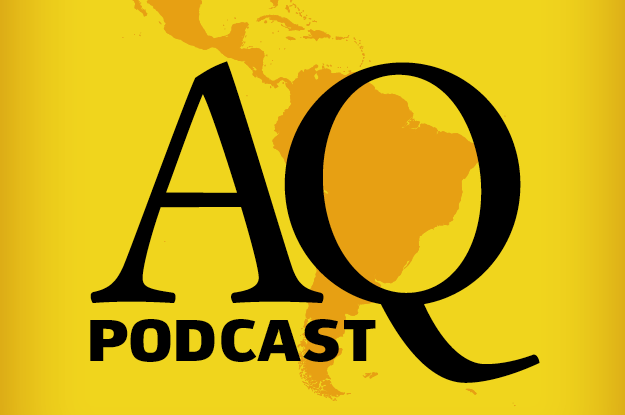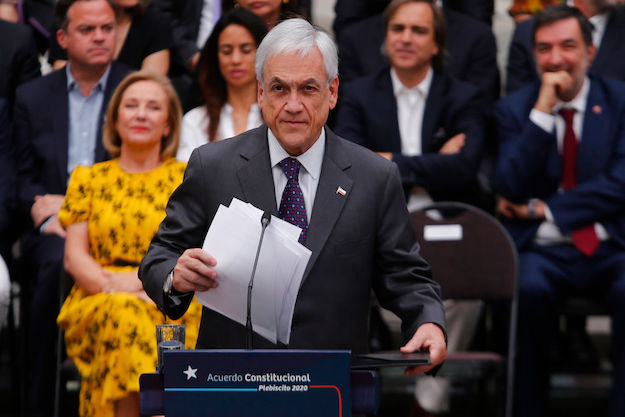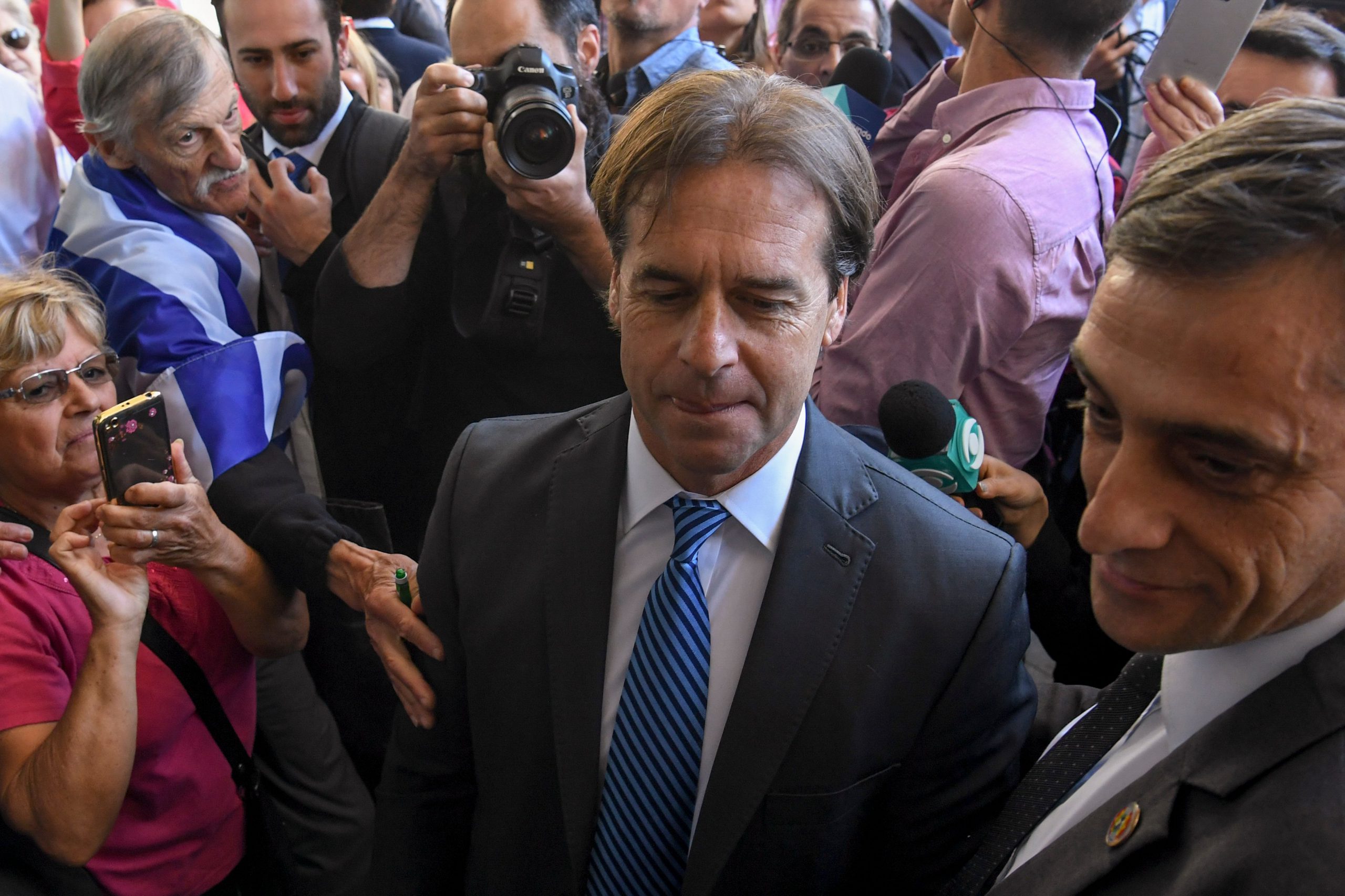An agreement signed in the early hours of Nov. 15, between the right-wing government of President Sebastián Piñera and his left-wing opposition, has opened the way for Chileans to decide whether they want a new constitution.
After four weeks of uninterrupted protests and riots, the agreement offers a way out of the crisis. Chile will have a chance to move on from the illegitimate, authoritarian origin of its current 1980 constitution, without endangering the market-friendly and socially oriented economic model that has made the country a Latin American success story.
Stuck between a rock and a hard place, Piñera – perhaps fearing that social pressure would force him to resign – changed his tune by agreeing to negotiate, and the result is a lengthy and gradual constitutional replacement process, beginning with a referendum in April 2020 and potentially ending with a new constitution by late 2021.
The current constitution, drafted by the Pinochet dictatorship, was originally designed to prevent democracy from flourishing. Yet, since a plebiscite in 1988 and the restoration of democracy in 1990, the document has been amended several times, allowing Chile to build a consolidated democracy even if it has come on the foundation of an originally authoritarian constitution.
What could change
Critics of the existing constitution point to what they see as an excessive number of super-majority requirements for the adoption of even regular legislation. Others criticize the composition and powers of the constitutional tribunal. Many would like to expand the chapter on rights — mirroring a common practice in Latin America where constitutions list multiple social rights, regardless of whether they can be enforced. Finally, others point to limits placed on the state’s ability to create public companies or to the importance given to private property.
All of those issues could be addressed through regular constitutional reforms. In fact, this has been done multiple times over the years despite the high threshold requirements. But changing specific issues does not address the illegitimate origin of the 1980 document.
The Nov. 15 agreement offers a general outline of how the constitutional process will move forward. First, there will be a plebiscite in April 2020 where Chileans will decide whether or not they want a new constitution and, if so, what process they would prefer to use to get one. That could entail a constitutional assembly with only elected members, or one with equal representation from current legislators and newly elected members. Second, in case a majority votes for a new constitution in April, elections for a special assembly would take place in October 2020, concurrently with municipal and regional elections. Third, the constitutional assembly would have nine months – with the possibility of an additional three-month extension – to produce a new document, and members would need to choose its voting rules and processes by a two-thirds majority. Fourth, a mandatory popular vote would be required for ratification of the resulting constitution.
Celebrated by most government and opposition political parties, the agreement is likely to help end the violence and looting that has taken over many demonstrations in recent weeks. Though the Communist Party notably abstained from signing the agreement – claiming that the two-third majority requirement will give the right-wing coalition undue power to influence the content of the document – widespread support has produced a sense of satisfaction and relief. Markets have responded positively. Some radical left-wing groups may continue protesting in coming days, but it is safe to expect that the agreement will help bring peace and normality back to Chile.
Naturally, the devil is in the details. Though it is widely expected that a majority will vote in favor of writing a new constitution, those against it will have a chance to express their views. The larger the “No” vote in April 2020, the more pressure on legislators to take into consideration provisions in the current document. In case of a surprise, with a win for the camp in favor of keeping things as they are, the Pinochet-era constitution will finally have a seal of democratic legitimacy – and could be further reformed following the same process that has allowed for more than 45 changes since 1990.
What’s next?
Details for the constitutional assembly that would take place in October 2020 have yet to be fully determined. The agreement does not say how many members will be elected, but it does stipulate the use of the rules that apply to congressional elections – thus implying proportional representation. It would make sense for those elections to be held on a national level – rather than by congressional district – in order to prevent candidates from offering district-based promises to win seats on the assembly. Moreover, since the current system favors party candidates over independents, the constitutional convention will reflect the interests and priorities of parties rather than those of civil society, constitutional experts or independents.
If members of the assembly fail to broker agreements, Chile might end up with a hung convention (like a hung jury that can’t agree on a verdict), in which case the 1980 constitution would remain in place. If the constitutional convention fails to build a consensus on specific details of the constitution – like the state’s power to nationalize mining or the powers and attributions of the constitutional tribunal – it is not clear what would happen. A committee of experts will be formed in coming days to work out those details.
For Piñera, the agreement is a lifesaver. He has regained some footing, although he remains widely unpopular. For his right-wing coalition, being associated with Piñera might bring heavy electoral costs. That coalition also risks splitting over the April referendum. While most right-wing presidential hopefuls support the public poll on a new constitution, a far-right presidential candidate, José Antonio Kast, is likely to come out against it. If support for keeping the constitution is unexpectedly high, Kast could attempt a hostile takeover of Piñera’s coalition.
There are some threats for the left as well. While the governing coalition may mimic the 2017 election and run for assembly seats as a single ticket, left-wing parties might fail to form a united front – just like they did in 2017. Given that Chile’s electoral system favors the coalition with the highest share of votes, the right-wing coalition might end up getting more seats than expected in a potential constitutional assembly.
Still, the mood on Friday morning in Chile was hopeful, because there appears to be an institutional way out of the crisis. After four weeks of massive protests, riots, looting and fires, the political conflict seems to be back on the institutional track and an institutional solution is in sight. Moreover, the agreement will induce political parties to build broad coalitions and broker wide-ranging agreements in order to move forward.
Though a gridlocked convention cannot be ruled out, the optimism in Chile’s streets and in financial markets underlines the belief that Chileans want to fix their country’s market-friendly economic model and consensus-based political model, not throw them in the trash. The road ahead is full of obstacles – and radicalized groups will continue testing the strength of Chile’s democratic institutions – but now Chileans see that there is light at the end of the tunnel, and they are understandably relieved that the road ahead will have the familiar flavor of consensus building and broad agreement that has made Chilean democracy so successful over the past three decades.
—
Navia is a professor of liberal studies at NYU and professor of political science at Diego Portales University in Chile


